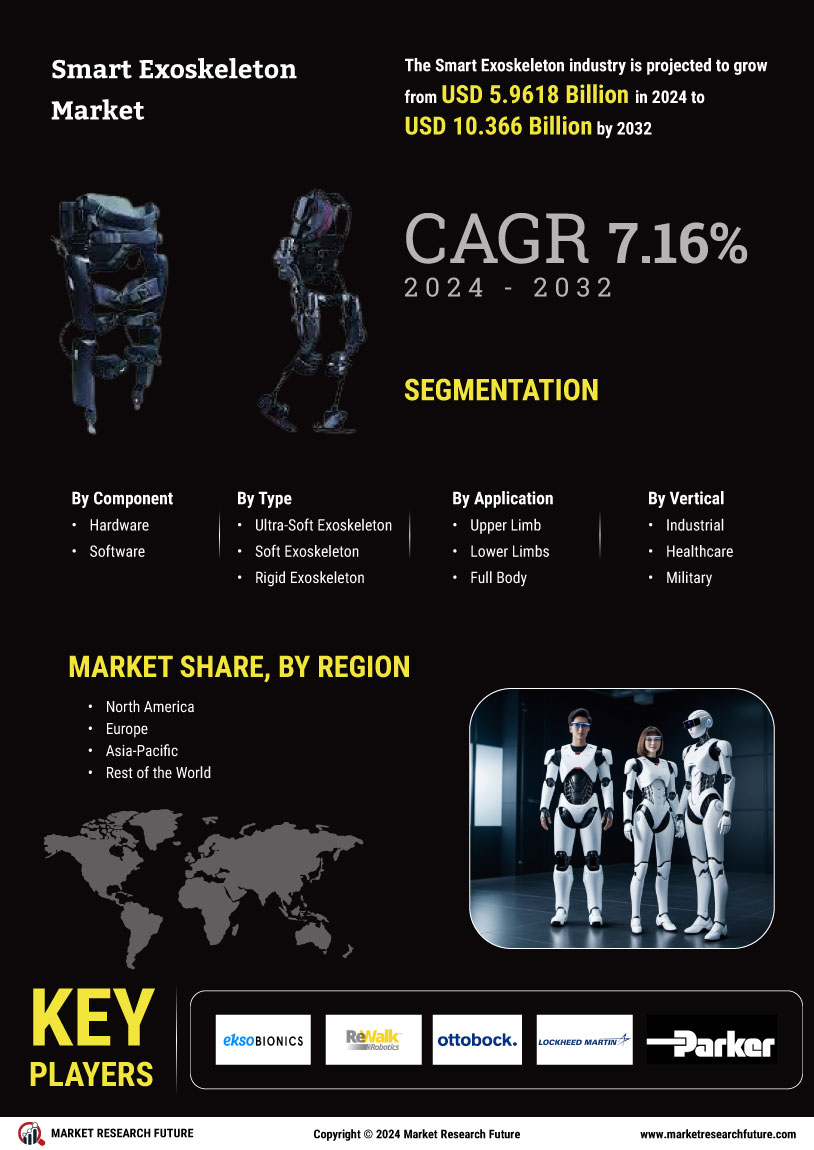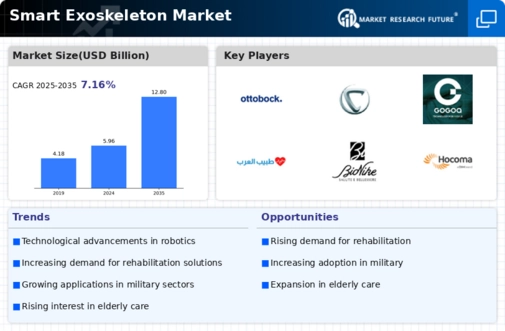Aging Population
The Global Smart Exoskeleton Market Industry is significantly influenced by the aging population, which is increasing the demand for assistive technologies. As the global demographic shifts, more individuals require mobility assistance due to age-related conditions. Exoskeletons provide a viable solution for enhancing mobility and independence among the elderly. This demographic trend is expected to drive market growth, with projections indicating a market value of 12.8 USD Billion by 2035. The need for rehabilitation and support systems for older adults is likely to propel the adoption of smart exoskeletons in healthcare settings.
Technological Advancements
The Global Smart Exoskeleton Market Industry is experiencing rapid technological advancements that enhance the functionality and efficiency of exoskeletons. Innovations in materials, such as lightweight composites and advanced robotics, are making these devices more accessible and user-friendly. For instance, the integration of artificial intelligence and machine learning allows for adaptive control, improving user experience and performance. As a result, the market is projected to reach 5.96 USD Billion in 2024, indicating a growing demand for sophisticated exoskeleton solutions across various sectors, including healthcare and industrial applications.
Workplace Safety Regulations
The Global Smart Exoskeleton Market Industry is also propelled by stringent workplace safety regulations that mandate the implementation of ergonomic solutions. Industries such as construction and manufacturing are increasingly adopting exoskeletons to reduce the risk of musculoskeletal injuries among workers. These devices not only enhance worker safety but also improve productivity by enabling employees to perform physically demanding tasks with reduced fatigue. As companies seek to comply with safety regulations, the demand for smart exoskeletons is expected to rise, contributing to the overall market growth.
Increased Investment in Healthcare
Investment in healthcare technology is a crucial driver for the Global Smart Exoskeleton Market Industry. Governments and private entities are increasingly funding research and development initiatives aimed at improving rehabilitation technologies. This influx of capital is fostering innovation and accelerating the introduction of advanced exoskeletons designed for medical applications. For example, initiatives aimed at enhancing post-stroke recovery and mobility rehabilitation are gaining traction. As a result, the market is anticipated to grow at a CAGR of 7.16% from 2025 to 2035, reflecting the rising importance of exoskeletons in healthcare.
Rising Demand for Rehabilitation Solutions
The Global Smart Exoskeleton Market Industry is witnessing a surge in demand for rehabilitation solutions, particularly in physical therapy and recovery settings. Exoskeletons are being utilized to assist patients with mobility impairments, providing support during rehabilitation exercises. This trend is driven by the increasing prevalence of conditions such as spinal cord injuries and stroke. As healthcare providers seek effective methods to enhance patient outcomes, the adoption of smart exoskeletons is likely to expand. The market's growth trajectory suggests a robust future, with an anticipated value of 12.8 USD Billion by 2035.

















